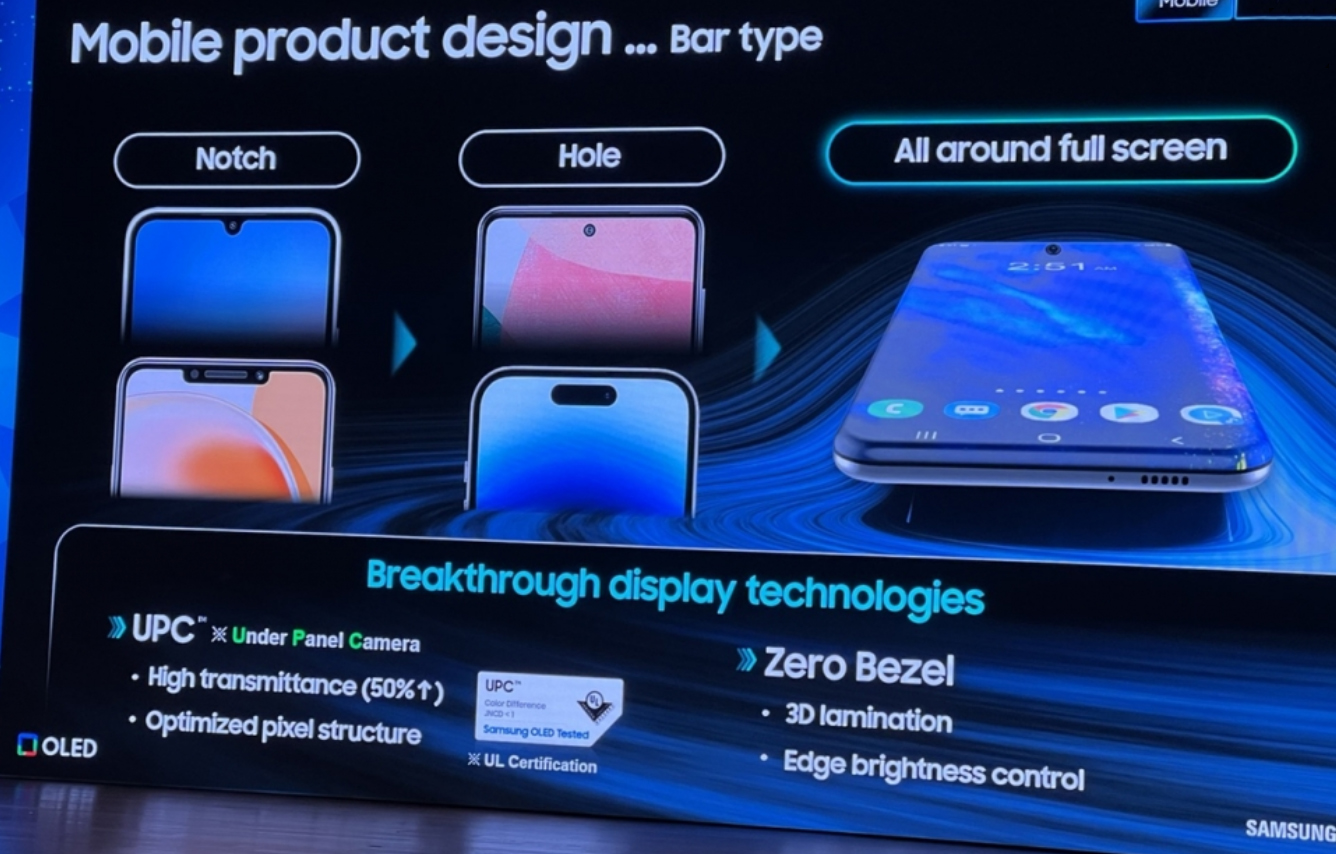I’m not a fan of bezels, so the news that Samsung Display is working on a completely bezel-less display is metaphorical music to my ears. Especially as Samsung Display makes screens for iPhones.
As reported by The Elec and OLED-info, at a trade show Samsung noted that through the use of 3D lamination and edge brightness control tech, it can make a “zero bezel” display that effectively wraps around the whole frame of a phone (below).

While the Samsung Galaxy S23 Ultra has curved sides to its display, making for a screen that’s notably more expansive than many of the best phones, it still has bezels on the top and bottom of the panel. Not a huge deal, but the scope to completely remove them could mean the so-called Galaxy S24 Ultra is pretty much all-screen on the front, making for more immersive viewing of all manner of content on the go.
However, the most interesting bit of hypothesis here is that Samsung Display makes screens for Apple’s iPhones, and so in theory we could see this screen technology make its way over to Apple’s flagship smartphones. The iPhone 15 Pro is tipped to have slimmer bezels but not get rid of them completely, so we may have to wait for the iPhone 16 or even the iPhone 17.
Upgraded under-display camera tech
OLED-info also noted that Samsung Display touted an improved under panel camera (UPC) as one way to evolve its screen tech. A high transmittance in excess of 50% is on the cards, which in non-technical terms means more light filtering through the display to the camera’s sensor; this generally leads to better photos.
And the company also noted the UPC will have an optimized pixel structure, presumably making for clearer and sharper images when taken with such a camera. As it stands, UPCs deliver functional photos but are hardly competing with traditional selfie cameras that don’t have a display in the way.
Samsung Display’s improved UPC, or the work it's doing on it so far, would likely feature on the next Galaxy Z Fold phone. But I’d be quietly hopeful that such tech finds its way to a future iPhone, which could finally rid Apple’s phones of annoying notches or cutouts; as interesting as the Dynamic Island is, I don’t feel it really has enough software support to quite warrant the screen space it consumes.
This is all speculation on my part, but Samsung Display’s work could be the key to seeing smartphone design take its next evolutionary steps forward.




0 Comments
If you have any doubts, Please let me know